
In the run-up to the 50th anniversary of the ATW Air Transport Achievement Awards, which will be held May 31 in Dubai, here’s a look at past Airline of the Year award winners as well as key industry events from ATW’s archives.
The fourth decade of the Awards—2004-2013—spanned the 9/11 terrorist attacks, further industry consolidation and the 2012 global financial crisis, when fuel prices soared to record highs.
The decade also saw the introduction into service or program announcement of new aircraft types, including the Airbus A320neo, A350 XWB and A380; ATR 72-600; Boeing 787 and 737 MAX; the Bombardier CSeries and CRJ1000; the COMAC C919; the Embraer E170/190 and E2; and the Mitsubishi Regional Jet (MRJ) program.
In addition, the industry stepped up initiatives to reduce aviation’s effects on the environment, including airlines operating the first flights using a mix of biofuels and jet fuel.
Finally, social media sites became the newest tools in distribution strategies as passengers began to take charge of their air travel process at home via growing internet access, and at the airport through self-ticketing and self-check-in.
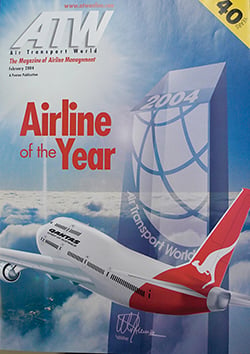
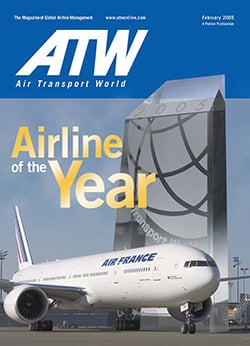
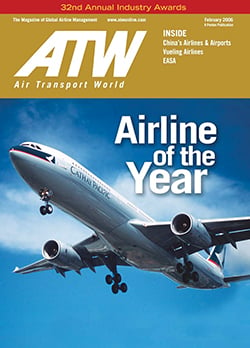

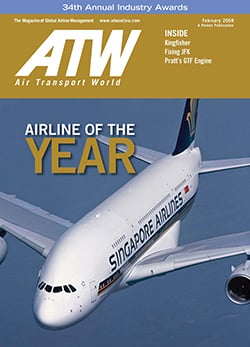
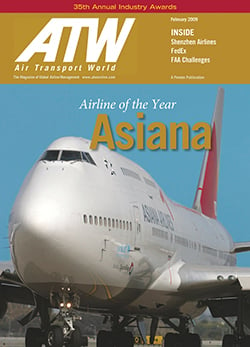
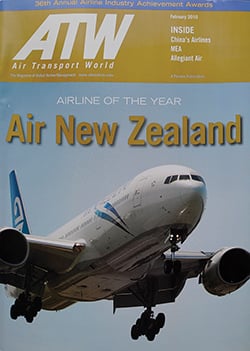
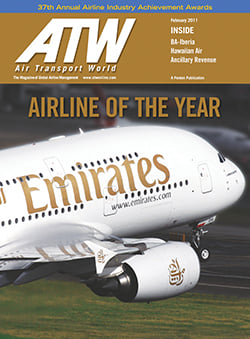
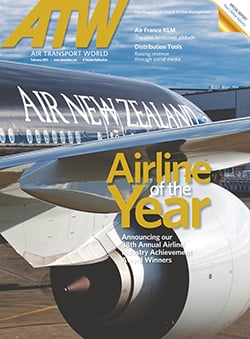

KEY EVENTS
February 2004: The Embraer E170 received type certification from civil aviation authorities in Brazil, Europe and the US.
February 2004: Singapore Airlines began operating the world’s longest nonstop scheduled service, between Singapore and Los Angeles, using Airbus A340-500s with flights of up to 19 hours.
March 2004: The 100-seat Embraer E190 made its first flight. Launch customer New York-based JetBlue received its first delivery in 2005.
May 2004: The Air France-KLM merger was finalized.
October 2004: The last Boeing 757 rolled out, ending a production run of 1,050 aircraft over 22 years. It was delivered to Shanghai Airlines.
December 2004: The first flight of the 108-seat Embraer E195 took place.
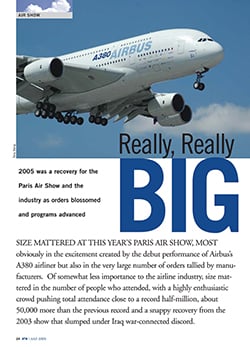
January 2005: Airbus revealed the A380 in Toulouse, France, and the aircraft made its debut performance at the 2005 Paris Air Show.
June 2006: Internet and airport kiosk self-check-in use grew, enhancing convenience for passengers and cutting costs for airlines.
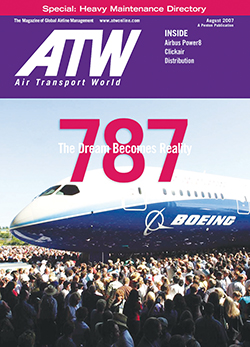
October 2007: The ATR 72-600 series aircraft was announced; the prototype, converted from an ATR 72-500, first flew in July 2009.
November 2007: The European Parliament voted to include aviation in the EU’s Emissions Trading Scheme from 2011 and to place tighter pollution caps on airlines than had been initially proposed by the European Commission.
February 2008: Virgin Atlantic operated a Boeing 747 demonstration flight from London Heathrow to Amsterdam partially powered by biofuel.
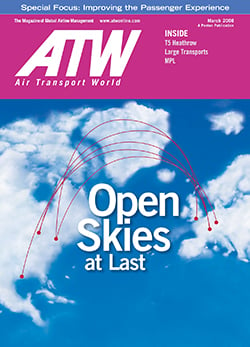
March 2008: Mitsubishi Heavy Industries launched the Mitsubishi Regional Jet (MRJ) program with an order for 25 aircraft from All Nippon Airways.
May 2008: Soaring fuel prices put a quick end to US airlines’ hopes for another year of profit, with the nation’s 10 largest carriers posting a cumulative net loss of $11.8 billion.
May 2008: The Sukhoi Superjet 100 made its first flight from Komsomolsk-on-Amur, Russia. The new regional jet made its first commercial flight with then-Armenian flag carrier Armavia in 2011.
May 2008: China established the Commercial Aircraft Corp. of China (COMAC) in Shanghai with a focus on commercial jets in the 150-seat size category. Beijing said it could compete with some Boeing and Airbus models by 2020.

March 2010: The ATR 42-600 completed its first flight.
April 2010: An ash cloud from Iceland’s Eyjafjallajokull volcano led to the closure of most EU airspace for nearly a week, an action heavily criticized by many airlines and industry trade groups.
May 2010: British Airways and Iberia signed a definitive merger agreement in April, creating a third mega-airline group in Europe, which was approved in January 2011 under the name International Airlines Group.
August 2010: Chile’s LAN and Brazil’s TAM signed a nonbinding agreement to merge, followed by a binding agreement in January 2011. The merger was finalized in June 2012, forming LATAM Airlines Group.
October 2010: Shareholders of United Airlines and Continental Airlines approved the merger of the two carriers, which was completed March 3, 2012.
December 2010: The first Bombardier CRJ1000s were delivered to Air Nostrum and Brit Air.
December 2010: Airbus launched the A320neo program with the option of CFM International LEAP-X or Pratt & Whitney PW1000G geared turbofan engines.
June 2011: KLM Royal Dutch Airlines operated the first-ever scheduled commercial flight partially powered by biofuel when it flew a Boeing 737-800 from Amsterdam to Paris Charles de Gaulle that performed “exactly the same—as expected—as flights on traditional kerosene.”
August 2011: Malaysia Airlines, Air Asia and long-haul LCC AirAsia X entered into a comprehensive collaboration framework, which was considered the first major consolidation in the Southeast Asia region.
August 2011: Boeing launched the 737 MAX program, and offered three variants: the MAX 7, -8 and -9.
December 2011: COMAC began production of the C919, which made its maiden flight in May 2017. The C919 received its CAAC type certificate in September 2022 and completed its first commercial flight, operated by China Eastern Airlines, in May 2023.
June 2013: Embraer launched its second-generation E-Jet, the E2, at the Paris Air Show and secured a firm order from Utah-based regional airline SkyWest for 100 E-175-E2s.
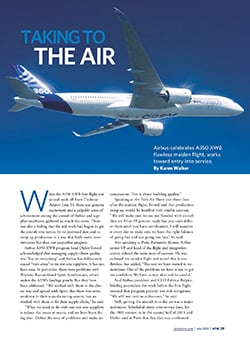
September 2013: Bombardier’s first CSeries aircraft, the CS100 (now the Airbus A220), made its initial flight, and entered commercial service in June 2016 with launch customer SWISS.

